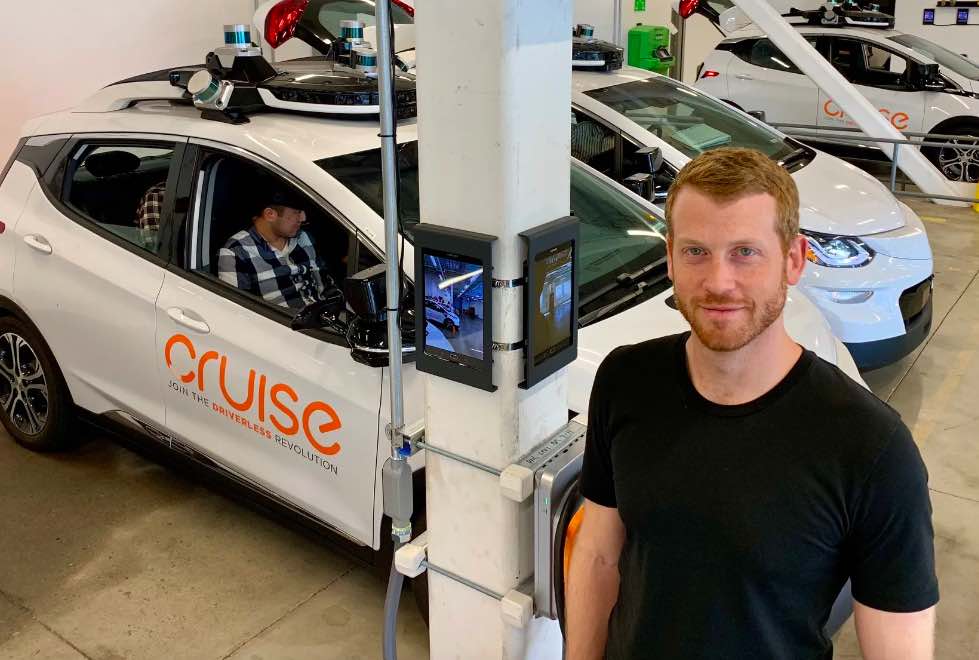|
Listen to this article  |

Kyle Vogt resigned from self-driving car company Cruise after a tumultuous few weeks. | Credit: Cruise
Kyle Vogt, co-founder and CEO of Cruise, resigned last night from the self-driving car company. He took over as interim CEO in December 2021 and became CEO in February 2022. Vogt started Cruise in 2013 with Dan Kan. It was acquired by General Motors in 2016.
“The last 10 years have been amazing, and I’m grateful to everyone who helped Cruise along the way,” Vogt said on X, formerly Twitter. “The startup I launched in my garage has given over 250,000 driverless rides across several cities, with each ride inspiring people with a small taste of the future.”
Vogt said his future plans include spending time with family and “exploring new ideas.” GM Chair and CEO Mary Barra said Mo Elshenawy, who is executive vice president of engineering at Cruise, will serve as president and CTO.
Bumpy ride for Cruise
Vogt’s resignation comes after a difficult few weeks for Cruise. The company’s troubles began on October 2 when a Cruise robotaxi dragged a woman after she was hit by a different car driven by a human. After being hit by the first car, the woman was thrown into the path of the Cruise vehicle, which couldn’t brake in time to avoid her.
On October 24, California’s Department of Motor Vehicles (DMV) immediately suspended Cruise’s autonomous vehicle deployment and driverless testing permits. The DMV said it suspended the permits because Cruise vehicles pose a risk to the public based on a string of recent incidents and because the company “misrepresented” the safety of its robotaxis.
California officials said Cruise withheld footage of the October 2 incident that shows Cruise’s robotaxi attempting to pull over while the pedestrian was under the vehicle. This maneuver dragged the woman for around 20 feet at a speed of 7 MPH before stopping. Cruise disputes that it withheld footage or information from the DMV.
Cruise suspends nationwide operations
Days after the California DMV suspended its permits, Cruise suspended driverless operations nationwide. At the time, Vogt said Cruise made the decision to suspend nationwide operations because it wanted to take time to examine its processes, systems, and tools. Vogt also said the company would take time to “reflect on how we can better operate in a way that will earn public trust.”
Cruise said the decision was not fueled by any new on-road incidents and that human-supervised operations of its AVs will continue. This shut down autonomous operations in Houston, Phoenix, and Austin. Cruise has also been testing in Charlotte, N.C., Dallas, Miami, and Nashville.
Controversies around the company haven’t stopped since it paused autonomous operations. Earlier this month, Cruise responded to allegations that its autonomous vehicles require frequent help from human remote operators. A report from the New York Times stated that remote workers intervened to help Cruise’s AVs every 2.5 to 5 miles.
Vogt posted comments on Hacker News responding to the allegations. He said the company’s remote operators assist Cruise AVs 2-4% of the time on average in complex, urban environments.
“The stat quoted by NYT is how frequently the AVs initiate an RA session,” Vogt wrote. “Of those, many are resolved by the AV itself before the human even looks at things, since we often have the AV initiate proactively and before it is certain it will need help. Many sessions are quick confirmation requests (it is ok to proceed?) that are resolved in seconds. There are some that take longer and involve guiding the AV through tricky situations. Again, in aggregate, this is 2-4% of time in driverless mode.”
Future plans for Cruise
It’s unclear what plans GM has for Cruise in the future. But Barra said, “We continue to believe strongly in Cruise’s mission and the potential of its transformative technology as we look to make transportation safer, cleaner and more accessible.”
In October, GM said it had lost roughly $1.9 billion on Cruise in the first nine months of 2023, including $732 million in just the third quarter. Since 2017, Cruise has lost more than $8 billion. GM originally believed that Cruise could generate $50 billion in revenue for the company by 2030, and it hasn’t backed down from that estimate in recent months.
Cruise has also laid off contractor workers in the past few weeks who were responsible for cleaning, charging and maintaining vehicles. And more layoffs are expected at Cruise, which employs about 4,000 full-time workers.
Despite its troubles in the U.S., in October Cruise said it’s working with GM and Honda to bring its robotaxis to Japan. The companies have entered into a memorandum of understanding to establish a new joint venture to provide a driverless ride-hail service in Japan starting in early 2026.
The Robot Report reached out to Cruise for comment on Vogt’s resignation and had not heard back as of press time.
 Submit a session abstract now to be an event speaker. Submission Deadline: December 15, 2023
Submit a session abstract now to be an event speaker. Submission Deadline: December 15, 2023
Credit: Source link


Comments are closed.